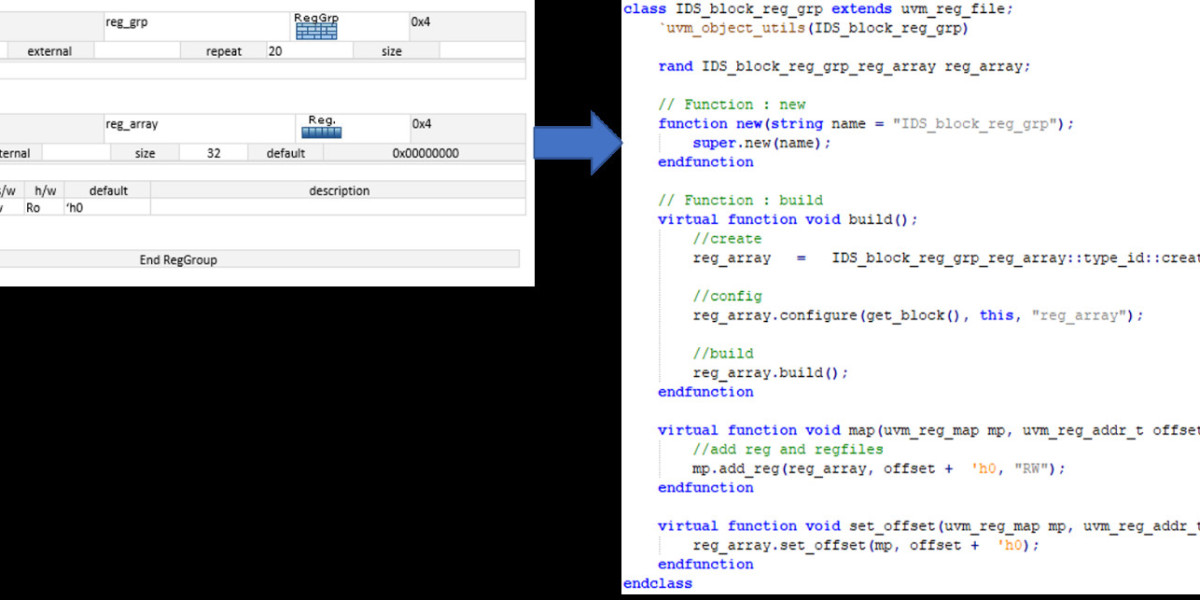Introduction: In the intricate landscape of ASIC design, efficiency isn't just a goal; it's a fundamental requirement. The Universal Verification Methodology (UVM) stands as a guiding force, with the Register Abstraction Layer (RAL) at its core. This exploration delves into the strategic implementation of automated UVM RAL, emphasizing the UVM Register model, and shedding light on practical UVM exemplars that showcase the real-world impact of automation.
Demystifying UVM Register Abstraction Layer (RAL): The UVM RAL serves as a pivotal link between design and verification, providing a standardized interface for meticulous register control. By abstracting the complexities of register implementations, the UVM RAL not only simplifies the verification process but also ensures a consistent approach essential for the success of ASIC designs.
Strategic Role of Automation: Automation within the UVM RAL framework is a strategic enabler. It not only reduces manual efforts but also mitigates the risk of human errors that could impede the verification process. This strategic approach extends to establishing a uniformity across the design, aligning the verification environment seamlessly with the register specifications. In the intricate landscape of ASIC designs, characterized by a multitude of registers demanding thorough validation, automation becomes the linchpin of efficiency.
UVM Register Model at the Helm: At the heart of the UVM RAL lies the UVM Register model—a sophisticated representation of register behavior and properties. Automating the UVM Register model involves its generation from a register description language, with a seamless integration process that emphasizes collaboration with IP-XACT.
Synchronicity with IP-XACT: IP-XACT, with its standardized XML format, plays a pivotal role in seamlessly integrating UVM Register models with register descriptions. This integration simplifies the specification process and fosters collaboration between design and verification teams. A unified register description ensures a smooth flow of consistency from design to verification, elevating the coherence of the entire project.
Navigating the Strategic Automated Workflow: The strategic automation of the UVM RAL unfolds with meticulous planning. The register description is captured in IP-XACT, outlining registers, fields, and properties with precision. Subsequently, an automated tool translates this IP-XACT description into the UVM Register model, ensuring that any alterations in register specifications seamlessly propagate to the verification environment.
The UVM Register model becomes the linchpin for the UVM RAL. Automation extends to the generation of UVM sequences and testbenches, leveraging the UVM Register model to expedite the creation of comprehensive verification environments. Now, let's delve into practical UVM exemplars to witness the tangible impact of this holistic automation approach.
Practical UVM Exemplars: Imagine a scenario where an ASIC design involves diverse IP blocks, each with distinct register specifications. Practical UVM exemplars serve as concrete demonstrations, illustrating how automation tools adapt to these diversities. These exemplars provide tangible evidence of flexibility and customization in action, showcasing the dynamic nature of UVM Register model automation in addressing real-world design complexities.
Strategic Solutions for Challenges: While automation is a potent tool, addressing challenges strategically is imperative. Diverse register specifications across different IP blocks demand customization and flexibility in automation tools. Robust error-handling mechanisms become vital to detect and rectify discrepancies between the IP-XACT description and the generated UVM Register model.
Conclusion: Automating the UVM Register Abstraction Layer is not just an evolution; it's a revolution in the dynamic realm of ASIC design. The integration of UVM Register models with IP-XACT, coupled with practical UVM exemplars, not only accelerates the verification process but also elevates the overall quality of ASIC designs. As the semiconductor industry propels forward, embracing these strategic automation methodologies, enriched with real-world exemplars, becomes paramount for staying at the forefront of innovation and ensuring the resilience of ASIC products in an ever-evolving market.








